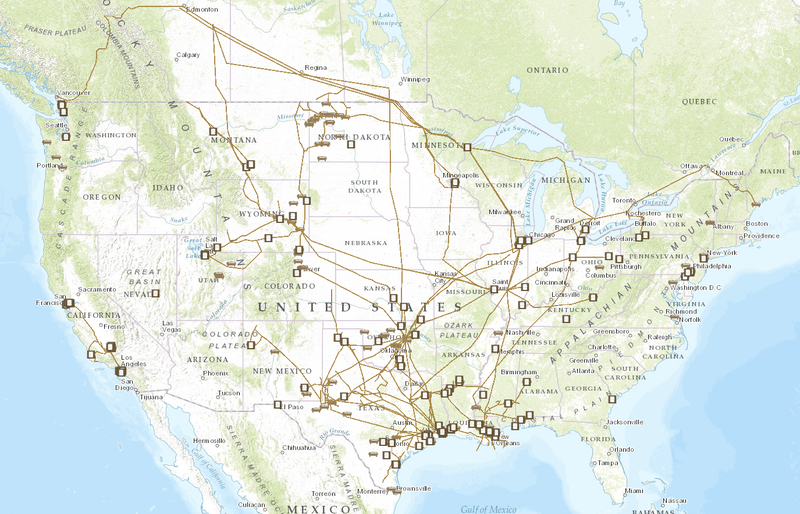10) But that oil first has to make it to refineries to be useful
Once crude oil is drilled out of the ground, it has to be sent off to refineries that can turn it into usable fuel for our cars and trucks. This map shows all the major pipelines and rail terminals that take oil to refineries (the brown squares):
 (Energy Information Administration)
(Energy Information Administration)This map is crucial for understanding a number of contemporary energy disputes.
For instance, a lot of oil is being dug up from the tar sands in Alberta, Canada. But there arguably aren’t enough pipelines to bring all that oil to refineries. That’s why Canada and various oil companies want to build the Keystone XL pipeline — to bring that tar sands oil down to Texas refineries. Environmentalists have opposed that project, arguing that boosting tar sands production is incompatible with dealing with climate change. Obama, in turn, has wavered on a decision for years.
Separately, oil companies have also argued that there’s not enough refining capacity down in Texas to handle the recent boom in US oil production. They’d like to lift the longstanding ban on exporting crude oil from the United States to other countries abroad — so that they can reach more customers.
Meanwhile, check out North Dakota. That state has recently become the epicenter of the US oil boom — thanks to fracking. But because this was so recent, there still aren’t enough oil pipelines running out of the state. Instead, oil companies have been shipping their crude out via trains (which is why you see all those rail terminals). The problem? Every now and again, one of these oil trains will get into an accident, causing leakages or, worse, a massive explosion. Policymakers in Washington have been fighting for some time over how to improve oil-by-rail safety.
